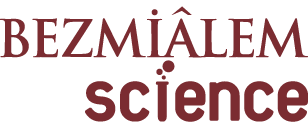ÖZET
Amaç:
Bu çalışmanın amacı, farklı polimerizasyon sürelerine maruz bırakılan yüksek viskoziteli cam iyonomer, cam karbomer (GC) ve biyoaktif restoratif materyalinin (BRM) mikrosertliklerini ve intrapulpal termal değişiklikleri karşılaştırmaktır.
Yöntemler:
Bu çalışmada 60 adet çekilmiş molar dişi kullanıldı. Sınıf 1 kavite preparasyonu sırasında pulpa odası ile oklüzal kavite tabanı arasında 1 mm dentin kalınlığı bırakıldı. Dişler rastgele altı gruba ayrıldı. Grup 1: Yüksek viskoziteli cam iyonomer siman (HV-GIC) ile restore edildi, 20 sn polimerize edildi. Grup 2: HV-GIC ile restore edildi, 40 sn polimerize edildi. Grup 3: GC ile restore edildi, 60 sn polimerize edildi, Grup 4: GC ile restore edildi ve 90 sn polimerize edildi. Grup 5: Biyoaktif restoratif materyal (BRM) ile restore edildi, 20 sn polimerize edildi, Grup 6: BRM ile restore edildi, 40 sn polimerize edildi. GC grupları hariç tüm cam iyonomer simanları LED polimerizasyon cihazı ile polimerize edildi. GC grupları özel ışık aleti ile polimerize edildi.Tüm örneklerin pulpaiçi ısı artış değerleri J tipi termometre cihazı ile ölçüldü. Daha sonra mikrosertlik değerleri üç farklı noktadan değerlendirildi. Veriler tek yönlü ANOVA, Tukey testi ve t-testleri ile analiz edildi (p<0,05).
Bulgular:
Grup 2, Grup 1’e göre pulpaiçi ısı artışında istatistiksel olarak anlamlı fark gösterdi Grup 4, Grup 3’e göre istatistiksel olarak daha yüksek pulpaiçi sıcaklık artışı gösterdi. Gruplar karşılaştırıldığında en yüksek mikrosertlik değerleri GC gruplarında elde edildi. Grup 2, Grup 1’e göre istatistiksel anlamlı derecede yüksek mikrosertlik değeri gösterdi. Grup 6, Grup 5’e göre anlamlı derecede yüksek mikrosertlik değeri gösterdi.
Sonuç:
BRM’nin 40 sn polimerizasyonu intrapulpal sıcaklık artışına neden olmadan mikrosertliği olumlu yönde etkilemiştir. GC’nin 90 sn polimerizasyonunda yüksek mikrosertlik değerleri elde edilirken pulpaya zarar verecek derecede ısı artışına da neden olmuştur.



